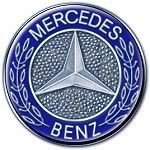"Saint Nicholas of Flüe (German: Niklaus von Flüe) (21 March 1417 – 21 March 1487) was a Swiss hermit and ascetic who is the patron saint of Switzerland."
"In 1467, he left his wife and his ten children with her consent and set himself up as a hermit in the Ranft chine in Switzerland, establishing a chantry for a priest from his own funds so that he could assist at mass daily. According to legend, he survived for nineteen years with no food except for the eucharist. His reputation for wisdom and piety was such that figures from across Europe came to seek advice from him, and he was known to all as 'Brother Klaus'."
"In 1470, Pope Paul II granted the first indulgence to the sanctuary at Ranft and it became a place of pilgrimage, being as it lay on the Jakobsweg (English: Way of St. James), the road pilgrims travelled on to Santiago de Compostela in Spain."
"Despite being illiterate and having limited experience with the world, his is honored among both Protestants and Catholics with the permanent national unity of Switzerland."
Ok, so that's a general background into Brother Klaus which comes from wikipedia and there's more detailed information there for further reading:
http://en.wikipedia.org/wiki/Nicholas_of_Fl%C3%BCe
http://de.wikipedia.org/wiki/Bruder_Klaus
Now here's where it gets interesting...
"Of the many spiritual insights Nicholas received in his visions, one in particular is reproduced often in a reduced logographic format, as a mystical wheel."
"Nicholas described his vision of the Holy Face at the center of a circle with the tips of three swords touching the two eyes and mouth, while three others radiate outwards in a sixfold symmetry reminiscent of the Seal of Solomon."

A cloth painted with the image, known as the Sachseln Meditation-Cloth associates the symbol with six episodes from the life of Christ. There's a lot of information about the interpretation of the imagery of the cloth on wikipedia and other sites which I'll give links to at the end of the post, and so I won't go into that here for now.

What's interesting is that the simplified 'wheel' image of his vision was made public in 1488 thanks to a pilgrim who visited Brother Klaus....
"Brother Claus is a simple layman who cannot read" (Heinrich Wölflin 1501). Yet the hermit speaks of his "book". It is a drawing with the structure of a wheel. The movement goes out from the centre and comes back to the centre. The wheel picture is made public in 1487 by an unknown pilgrim with an explanation from Brother Claus: "That is my book in which I learn and seek the art of this teaching." He calls the wheel the figure in which he contemplates the nature of God: "In the very centre is the undivided Godhead in which all the saints rejoice. Like the three rays the three Persons go forth from the one Godhead and have embraced the heavens and the whole world". An illustrated version of this wheel exists already during the hermit’s lifetime (see back side of this brochure). Both pictures bear witness to the deep wisdom and clear judgement of this "simple layman". [this paragraph comes from the following website: http://www.bruderklaus.com/?id=209]

[on the left is the image from the Augsburg version of the pilgrim's tract, and on the right is the image from the Nuremberg version of the tract (both dated around 1488)]
There's an obvious similarity to the AP wheel image, even though the Brother Klaus wheel has three extra 'arrows'. It seems likely Bessler would have known about Brother Klaus and his 'wheel' vision, and the Christian symbolic link to a 'wheel' would no doubt have interested Bessler. Could Bessler have included the AP wheel purely for its Christian message? - possibly, as it's on a page with two relevant bible quotes, however it still doesn't rule out its possible use for decoding further information or even as a clue itself.
I'd better stop there for now as it's a lot to take in for a first post and it's getting very late here.
For a bit of fun I modified the AP wheel...

Stewart
Links:
http://en.wikipedia.org/wiki/Nicholas_of_Fl%C3%BCe
http://de.wikipedia.org/wiki/Bruder_Klaus
http://flueliranft.ch/bruderklaus/index.html
http://www.helmut-zenz.de/hzflue.htm
http://www.bruderklaus.com/
This site has an amazing amount of information on Bruder Klaus:
http://www.nvf.ch/
Useful keywords for web searches:
Brother or Bruder Klaus or Claus, Nicholas of Flüe, Niklaus von Flüe, Pilgertraktat, Pilgertractat, Pilger traktat, Pilger tractat, Sachsler Meditationstuch, Sachseln, Meditationsbild, Radskizzen




